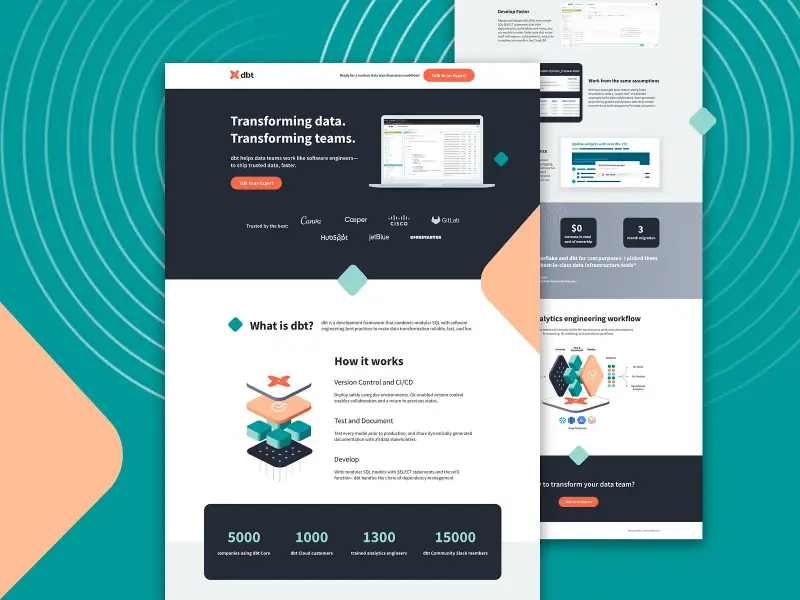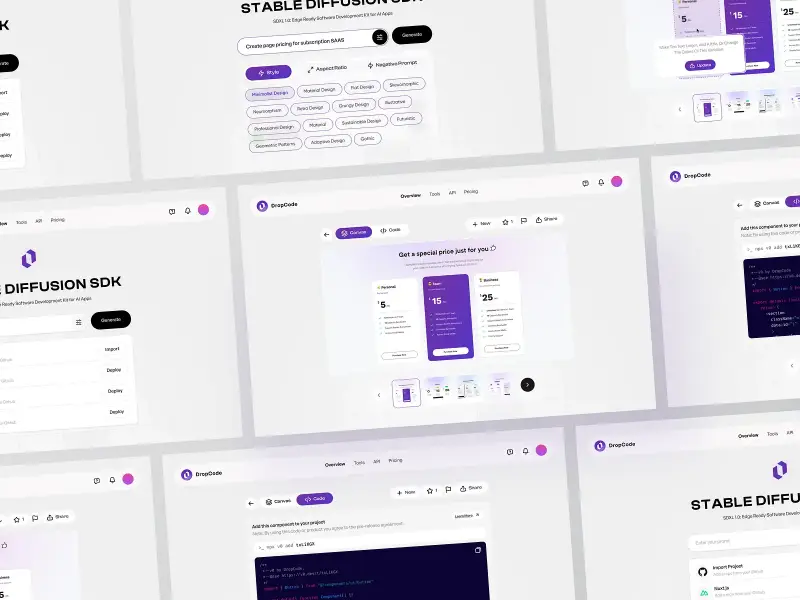How to Choose Software Development Frameworks Wisely
- David Ho
- 0 Comments
Software development frameworks play a big role in the tech world. They help developers create apps that are reliable, efficient, and easier to manage.
In 2022, the custom software development market was worth around 28.2 billion dollars. And it’s not slowing down anytime soon. Experts expect it to grow by more than 21 percent each year through 2032. That kind of growth shows just how important it is for businesses to have custom-built solutions supported by the right software development frameworks.
A strong framework in software development makes that possible. They give developers a structured way to build software, while still allowing the flexibility to customize things. That means businesses can get tools that really fit how they work. These frameworks also save time, improve workflow, and encourage new ideas by simplifying the development process.
In this blog, we’ll take a closer look at how software development frameworks work. You’ll learn what makes them so useful, how they support custom solutions, and why they’re shaping the future of how software is built. Whether you’re new to coding or just curious, we’ll break it all down in a way that’s easy to understand.
Why Use Software Development Frameworks?
Software development frameworks make a big difference when it comes to building apps and managing projects. They help simplify complex coding tasks and guide developers toward smarter, more efficient ways of working. The result? Better apps, faster delivery, and more consistent results.
Let’s explore some of the main reasons why frameworks are so helpful.
Software development frameworks
Faster and More Efficient Development
Frameworks help speed things up. They come with tools, reusable components, and ready-to-go templates that reduce the need to write everything from scratch. This means developers can spend more time on the unique parts of a project, while relying on proven software development framework examples to handle the rest.
With everyone working within the same structure, it’s easier for teams to stay on the same page. Collaboration improves, and projects move forward more smoothly. Plus, when the codebase is consistent and well-organized, debugging and updates take a lot less effort.
Clear Standards and Best Practices
One of the biggest advantages of using a framework is the structure it provides. Developers follow the same patterns and guidelines, which leads to cleaner, more reliable code. This makes the software easier to maintain and update over time.
For companies, this consistency helps with team transitions. New developers can understand the code faster and get up to speed quickly. Everyone speaks the same “language,” making teamwork and onboarding much simpler.
Learn More On:
A Helpful Community
The most popular software frameworks often have strong communities behind them. That means if you run into a problem, there’s a good chance someone else has already solved it. You can find tutorials, documentation, and active forums where developers share advice and solutions.
These communities are also constantly improving the frameworks. They add new features, fix bugs, and keep everything up to date with the latest trends. You also get access to plugins and add-ons built by other developers, which can expand what the framework can do.
Less Time, More Progress
Frameworks help cut down development time. With built-in tools like automated testing and drag-and-drop templates, developers can get more done in less time.
Many frameworks also work well with other tools used in software development. This smooth integration saves time and reduces the hassle of setting things up manually. And because frameworks encourage code reuse, developers don’t have to reinvent the wheel with every new project.
Easy to Scale and Maintain
As your app or platform grows, it needs to be able to handle more users and more features. Frameworks are designed to support that growth. They make it easier to scale your software without hurting performance.
They also make it simpler to manage your code. Want to add a new feature or improve an old one? No problem. The structure helps you make changes without breaking everything else. Many frameworks also include built-in security tools, which are essential for protecting user data and building trust.
Types of Software Development Frameworks
When it comes to building software, choosing the right framework can make all the difference. Different frameworks are built for different purposes, and each one offers its own set of tools and features to help developers work more efficiently.
Let’s start by looking at frontend frameworks—these are the tools that help developers build the parts of apps that users see and interact with.
Frontend Frameworks
Frontend frameworks are essential for creating websites and apps that are smooth, responsive, and easy to use. They provide structure for building user interfaces, so developers don’t have to start from scratch every time. These frameworks often include built-in tools and templates, which help speed up development and improve the quality of the final product.
Here are three popular frontend frameworks that many developers rely on.
1. Vue.js
Vue.js is known for being simple and beginner-friendly. If you’re just getting started with web development, Vue is a great place to begin. It has a gentle learning curve and clear documentation that walks you through the basics step by step.
Even though it’s easy to learn, Vue is still powerful. It’s perfect for building fast, interactive interfaces, whether you’re working on a small project or something a bit bigger. Vue also comes with a wide range of tools and plugins, so you can easily add features as your app grows.
Its balance of simplicity and flexibility is why Vue is so popular with both new and experienced developers.
Have a Project Idea in Mind?
Get in touch with experts for a free consultation. We’ll help you decide on next steps, explain how the development process is organized, and provide you with a free project estimate.
2. Angular
Angular, made by Google, is a powerful framework built with TypeScript. It’s a great choice for large, complex web applications, especially those used by big companies.
What makes Angular stand out is its full set of built-in tools. These help developers manage everything from page layouts to data handling, all in one place. Angular is known for its modular structure and is often considered the best framework for software development when building enterprise-level apps, which means you can break your app into smaller, manageable parts. This makes it easier to keep things organized, especially as your project grows.
If you’re building an app that needs to scale and handle lots of features, Angular is a solid option. It’s designed for long-term success and works well for enterprise-level projects.
3. React
React, created by Facebook, is all about building fast and flexible user interfaces. Instead of working with entire web pages, React uses components, or small reusable pieces of code, to build user interfaces. This makes it easier to manage and update parts of your app without affecting everything else.
React also uses something called a virtual DOM to speed up performance. This means your app can handle updates and changes more smoothly, which is especially helpful for dynamic apps like social networks or dashboards.
React is a favorite among developers because it’s flexible, fast, and backed by a huge community that keeps it constantly improving.
Most popular software frameworks
Backend Frameworks
While frontend frameworks handle what users see and interact with, backend frameworks take care of everything that happens behind the scenes. These tools help developers manage things like databases, server operations, and the core logic that powers an app.
In short, backend frameworks are the foundation of any web application. They make sure everything runs smoothly, securely, and efficiently. Let’s look at some of the most popular software frameworks used in backend development.
1. Ruby on Rails
Ruby on Rails, often just called Rails, is a popular framework built with the Ruby programming language. It’s known for its focus on convention over configuration, which is just a fancy way of saying it makes a lot of decisions for you—so you can build things faster.
Rails follows best practices for web development and includes tools that help with everything from handling user data to sending emails. It also supports RESTful architecture, which helps organize how data flows through your app.
Rails is a great choice for teams looking for speed and simplicity. It also puts a strong focus on automated testing, which helps keep your code clean and reliable. If you’re working in a fast-moving environment, Rails can help you keep up.
2. Django
Django is a powerful framework built with Python, and it’s known for helping developers build secure, scalable apps quickly. One of its best features is that it comes with a lot of built-in tools—this is often called the “batteries-included” approach. That means less time setting things up and more time building your app.
It also has something called an ORM, or Object-Relational Mapping system, that makes it easier to work with databases without writing a lot of raw SQL code. Another helpful feature is the automatic admin panel, which lets you manage your site’s data without having to build a dashboard from scratch.
Django is a strong framework in software development for those who want to move fast without sacrificing security or scalability. It’s especially useful for startups and teams working on tight deadlines.
3. Express.js
Express.js is a lightweight framework that runs on Node.js, which means it’s written in JavaScript—just like many frontend frameworks. This is a big plus for developers who want to use the same language on both the front and back ends.
Express is often described as minimalist, but that doesn’t mean it’s lacking features. Instead, it gives you the basics and lets you add what you need as you go. This makes it highly customizable and great for building anything from small APIs to full-scale web apps.
It also plays nicely with just about any database or frontend tool, which makes it super flexible. Express is a top choice and a common mention in any software development framework examples, especially for developers who want full control.
Full-Stack Frameworks
Full-stack frameworks give developers everything they need to build both the front and back ends of a web application. That means one toolset can handle how things look on the surface (frontend) and how everything works behind the scenes (backend).
These full-stack tools bring everything together in one place and are often seen as the best framework for software development when consistency and scalability are key. They’re a great choice for teams that want consistency, scalability, and a complete solution from start to finish.
Let’s take a look at some of the top full-stack frameworks used in modern software development.
1. Spring Boot
Spring Boot is a full-stack framework built with Java, and it’s especially popular with large companies and enterprise-level applications.
One of the biggest benefits of Spring Boot is how much setup it handles for you. It takes care of configuration and dependency management, so you can focus more on writing your code and less on setting everything up.
It also comes with an embedded server, which means you don’t need to install a separate web server—everything you need is built right in. Spring Boot offers strong security features, which makes it a reliable choice for apps that handle sensitive data or need to meet high security standards.
If you’re working on a complex or large-scale project and need something powerful and secure, Spring Boot is a solid option.
Best framework for software development
2.ASP.NET Core
ASP.NET Core, created by Microsoft, is a full-stack framework designed for building modern, fast, and scalable web apps.
One of the best things about ASP.NET Core is that it’s cross-platform—you can run it on Windows, Mac, or Linux. That flexibility makes it a great choice for teams working in different environments.
Its modular design means you only use the parts you need, which helps keep your applications lightweight and high-performing. ASP.NET Core is built to handle lots of users and high traffic, so it’s perfect for apps that need to scale.
This framework also supports cutting-edge technologies and open web standards, keeping your apps up to date with the latest best practices. If you’re looking for a powerful and efficient full-stack framework that plays well in enterprise or high-demand settings, ASP.NET Core is a great pick.
3. Laravel
Laravel is a full-stack framework for PHP, and it’s well-loved for its clean, elegant code and developer-friendly features.
It helps simplify everyday development tasks like routing, session handling, and caching, which saves time and makes your code easier to manage. Laravel also includes tools for testing and security right out of the box, so you can build reliable apps without needing a bunch of extra add-ons.
One standout feature is Eloquent, Laravel’s built-in ORM (Object-Relational Mapping). It lets you work with databases in a more intuitive, readable way—almost like writing plain English.
Laravel is flexible enough for small projects but also powerful enough for more complex apps. It strikes a nice balance between simplicity and functionality.
Let’s talk
A consultation with the Client Relationship Manager, who represents TECHVIFY, without any commitment from your side, will give you:
- Structured and clear vision of your future application
- Information about how our software development company guarantees 100% on-time and on-budget delivery
- Recommendations for choosing the tech stack
- Advice on further steps
- Business-side recommendations
- Rough project estimation on software development
TECHVIFY is right where you need. Contact us now for further consultation:
Data Science and Machine Learning Frameworks
When it comes to building smart, data-driven applications, data science and machine learning frameworks are essential. These tools help developers and researchers work with large datasets, create predictive models, and deploy artificial intelligence (AI) solutions.
Whether you’re analyzing customer behavior, detecting patterns in data, or training a model to recognize images or text, these frameworks provide the building blocks you need.
Let’s explore a few of the most popular and powerful tools in this space.
TensorFlow
TensorFlow, created by Google, is one of the most widely used frameworks for machine learning and deep learning.
It’s designed to handle complex numerical computations and can easily manage large-scale neural networks, which are the foundation of many AI systems. One of the best things about TensorFlow is its flexibility—you can run it on servers, mobile devices, or even edge devices like sensors and smart cameras.
TensorFlow supports multiple programming languages and comes with a wide range of tools for building and training machine learning models. It’s perfect for developers working on advanced AI applications, whether in research labs or large companies.
If you’re aiming to build scalable, high-performance AI systems, TensorFlow is a top choice.
PyTorch
PyTorch, developed by Facebook’s AI Research team, is another favorite in the world of deep learning.
It’s especially popular among researchers because of its dynamic computation graph, which means you can make changes to your models on the fly. This makes it easier to experiment, test ideas, and fine-tune models quickly.
PyTorch is also known for being easy to use and debug, with a more “Pythonic” feel that many developers appreciate. It shines in areas like natural language processing (NLP), computer vision, and other AI tasks that require fast iteration and flexibility.
If your project involves research, prototyping, or rapid development, PyTorch is a great fit.
Scikit-learn
Scikit-learn is a go-to library for traditional machine learning tasks. It’s built in Python and is perfect for things like classification, regression, clustering, and even dimensionality reduction.
What makes Scikit-learn so appealing is its simplicity. You don’t need to be an expert in machine learning to start using it. Its clean, consistent interface makes it easy to train models, evaluate performance, and make predictions with just a few lines of code.
Scikit-learn also works well with other Python tools like NumPy, Pandas, and Matplotlib, making it a core part of many data science workflows. If you’re working on data analysis or need to apply classic machine learning algorithms, Scikit-learn is an excellent choice.
Learn More On:
How to Choose the Right Development Framework
With so many development frameworks out there, picking the right one can feel overwhelming. From web and mobile to data science and machine learning, it often seems like several frameworks offer the same tools to do the same job.
So how do you choose the one that’s right for your project?
Let’s break it down into a few practical steps.
1. Start With Your Project Type
The first step is to be clear about what you’re building. Not all frameworks are designed for the same purpose.
- If you’re building a website or web app, look at frontend or backend frameworks.
- For mobile apps, explore mobile-focused frameworks like React Native or Flutter.
- If your project involves data analysis or machine learning, check out frameworks like TensorFlow, PyTorch, or Scikit-learn.
Knowing the type of project you’re working on will help you narrow down your options quickly.
Framework in software development
2. Consider Your Team’s Skills
Once you’ve figured out the kind of framework you need, think about your team’s experience.
- What programming languages does your team know best?
- Are they already familiar with certain frameworks?
For example, if your developers are strong in Python, it makes sense to choose a Python-based framework like Django or Flask. Don’t force your team to learn a brand-new language unless there’s a really good reason.
Playing to your team’s strengths will save time and reduce frustration.
3. Look at Similar Projects
One of the best ways to choose a framework is to see what others have used for projects like yours.
- Are there successful apps or platforms similar to what you’re building?
- What frameworks did those teams use?
- Did they run into any challenges?
Case studies, developer blogs, GitHub repositories, and even online forums can give you real-world examples of what different frameworks can do. This can help you see what’s possible and whether a particular framework fits your goals.
4. Think About Support and Community
A strong community can make a big difference. Frameworks that are widely used and well-documented tend to have:
- More tutorials and guides
- More plugins and tools
- Faster bug fixes and updates
- A bigger pool of talent you can hire or consult with
Choosing a well-supported framework means you’ll have more help when you need it—and that’s always a good thing.
5. Balance Flexibility and Structure
Some frameworks give you tons of freedom to build things your way, while others provide a more structured approach with built-in rules and patterns.
- If you like having control and flexibility, go for minimalist frameworks like Express.js.
- If you prefer having a clear path and ready-to-use tools, structured frameworks like Laravel or Spring Boot might be better.
Think about your project’s complexity and how much guidance your team will need.
No framework is perfect, and you’ll always find pros and cons. The key is to pick one that fits your current needs and helps you get your project off the ground. You can always switch or evolve later as your app grows.
Conclusion
Choosing the right software development framework can be the difference between a scalable, efficient product and a project riddled with delays and technical debt. With countless frameworks available, identifying the one that aligns with your business goals and technical needs requires expert insight. Let TECHVIFY be your trusted partner. Our seasoned developers specialize in matching your vision with the ideal technology stack to accelerate your success.
TECHVIFY – Global AI & Software Solution Company
From Startups to Industry Leaders: TECHVIFY prioritizes results, not just deliverables. Accelerate your time to market and see ROI early with high-performing teams, AI (including GenAI) Software Solutions, and ODC (Offshore Development Center) services.
- Email: [email protected]
- Phone: (+84)24.77762.666









